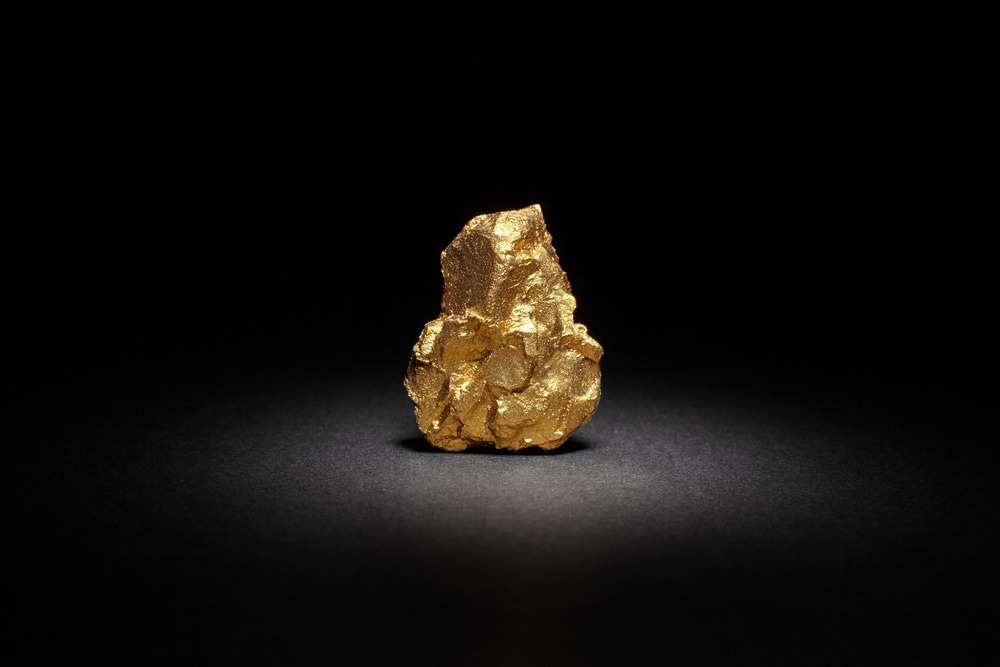Gold (Au) in its pure state is considered the most beautiful and hence most valuable of the pure metals. It is metallic, having a yellow colour when in mass, though when finely divided it may be black, ruby or purple.

Image Credit: Roman Bodnarchuk/Shutterstock.com
Background
Known and highly valued since ancient times, gold is found in nature as a free metal and in tellurides. It is widely distributed and is almost always associated with quartz or pyrite. It occurs in veins and alluvial deposits and is often separated from rocks and other minerals by sluicing and panning operations. The metal is recovered from its ores by cyaniding, amalgamating and smelting processes, while refining is carried out by electrolysis.
Properties of Gold
Gold is soft, ductile and the most malleable of metals, and because of this is usually alloyed to give improved strength and durability. Gold’s reflectivity of ultraviolet and visual light rays is low, however, it has high reflectivity of infrared and red wavelengths.
Gold is a good conductor of heat and electricity, and is unaffected by air, nitric, hydrochloric, or sulphuric acid and most other reagents. A mixture of one part nitric acid with three parts hydrochloric acid, called aqua regia, dissolves gold. It is also dissolved by solutions of azoimide. Further, it is attacked by sodium, and potassium cyanide plus oxygen.
The melting point of gold is 1,064 degrees C or 1,943 degrees Fahrenheit.
The most common gold compounds are auric chloride (AuCl3) and chlorauric acid (HAuCl4).
Gold has eighteen isotopes.
Applications of Gold
Gold is chiefly used for:
- Coinage
- Ornaments
- Jewellery
- Gilding
Green gold is generally used for jewellery. Green gold is an alloy of gold, silver and copper, and is graded from 14 to 18 karats. Coinage gold (USA) or standard gold (UK) contains gold and copper in slightly varied amounts, while Australian gold (Australia) contains silver instead of copper.
Other uses for gold include:
- Textile industry
- Gold flake is used as a radiation-control coating for spacecraft
- In electronic tubes, such as gold-plated grid wire, to give high conductivity and suppress secondary emissions
- Gold powder and gold sheet is used for soldering semiconductors, with gold having a good ability to wet silicon at 371°C (725°F)
- Gold is used as a plating material, where sodium gold cyanide [NaAu(CN)2] is used as a gold plating solution. The plating has good chemical resistance and electrical properties, however the plating lacks wear resistance, in which case gold-indium plate is utilised.
Gold alloys also have a number of applications such as:
- Gold-gallium and gold-antimony are used in electronic devices in the electronic industry (primarily as wire)
- Gold is used in dental and orthodontic applications, where it is rightly termed dental gold. The gold is alloyed with silver, platinum and on occasion palladium. It is sometimes alloyed with iridium for hardening.
More from AZoM: Gold - Applications and Developments in the Electronics, Biomaterials and Catalysis